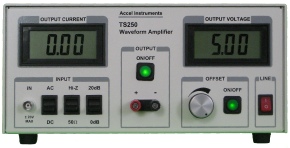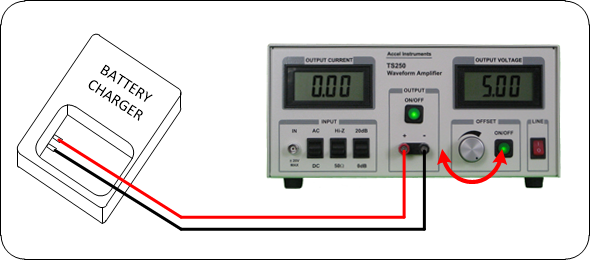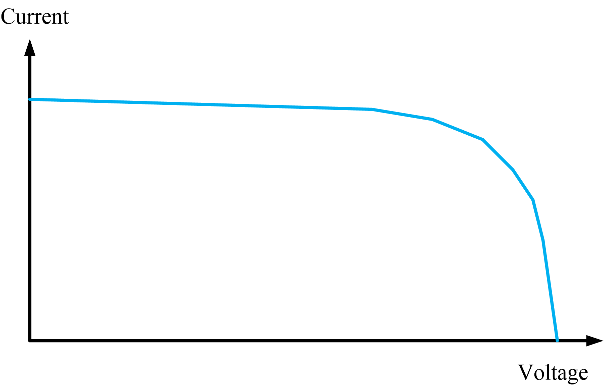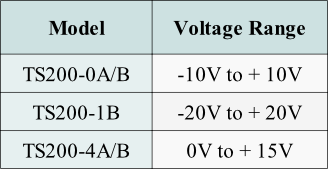











Instruments For Testing Your Innovations




Four Quadrant Power Supply
A four quadrant power supply is a lab power supply that can output both positive or negative voltage. It can sink or source current regardless the voltage is positive or negative. In contrast, most laboratory power supply can only source current and cannot sink current. Conventional power supply is operating in the first quadrant as shown in Figure 1. In the first quadrant, a common power supply output voltage is positive and source current only. A 4-
Two Quadrant Power Supply vs. Four Quadrant
A two quadrant power supply is typically operate in quadrant 1 and 4. This type of voltage supply outputs only positive voltage, but it can source and sink current. When it sourcing current, it is in quadrant-1. When it is sinking current (voltage still positive), it is in quadrant-4. The ability to operate in sink and source current mode make them a 2-quadrant power supply. Many test and measurement applications only require two quadrants, but most available voltage supply are either one quadrant or four quadrant. A 4-quadrant voltage supply supercedes two quadrant supply. That is, a four-quadrant supply can do the job of two-quadrant. Accel Instruments offers both 4-quadrant and 2-quadrant power supplies.

Figure 1. IV Diagram of a power supply showing all four quadrants.
Four Quadrant Supply Applications
Battery Simulation
One of the most common application usage of four-quadrant power supply is battery simulator. A battery simulator only requires two-quadrant operation. To simulate an battery, it must output a positive voltage and must able to sink and source. Both four or two quadrant power supply can be used as a battery simulator.
Battery simulator is often required to test battery chargers as shown in Figure 2. The advantage of battery simulator is the ability to change the voltage quickly. To quickly tests battery chargers, the emulated battery voltage must be able change (sweeping) from low-voltage to high-voltage quickly. While the simulated battery voltage is change, test engineer can measure the charging current and observe the charger behavior. In contrast, if a real battery is used for testing chargers, it requires many hours of charging and discharging the battery. Therefore a four-quadrant voltage supply used as a battery simulator is a very valuable instrument for charger testing. Click here for more information about charger testing using battery simulator.
Photovoltaic Cell Characterization
Four quadrant supply is great for testing photovoltaic (PV) cells. Typical characterization involve obtaining the current-voltage (IV) curve. This is done by forcing a constant voltage across the output of a solar or photovoltaic cell while recording the current.
To understand the PV cell IV curve characteristics, it is important to create a circuit model of a typical solar cell. An photovoltaic cell is modeled with a current source connected in parallel with a diode as well as a shunt resistor. The shunt resistance is usually large enough and often ignored. Figure 3 shows the PV cell equivalent circuit.
To characterize the photovoltaic, the four-quadrant voltage supply is connected to the solar cell output. The 4-quadrant supply is forcing the solar cell to a fix voltage. At the same time, current into the 4-quadrant power supply is measured. Starting from 0V, the current from the cell into the supply is measured. This is the short-circuit current. Then increase the voltage (i.e. 0.2V) and measure the current again. Keep increase the voltage while measuring the current, until the current is near zero. This is the open-circuit voltage. Figure 4 shows an example of photovoltaic cell IV curve.

Figure 2. Battery simulator connection using while operating in quadrant 1 and 2.

Figure 3. Photovoltaic cell (solar panel) test and characterization using a four-

Figure 4. Photovoltaic cell current-


Table 1. Four-Quadrant Power Supply Selection Guide




Quick Links

Related Technical Information
Copyright: Four Quadrant Power Supply
Bipolar Power Supply vs. Four Quadrant
Bipolar power supply is a voltage source that can output positive and negative voltage. It is at least able to operate in quadrant 1 and 3. However, most bipolar power supply can operate in all four quadrants. In effect a bipolar power supply is same as a 4-quadrant supply. Often time bipolar and 4-quadrant power supplies are interchangeable.
AC Four Quadrant Power Supply and Amplifier
Four quadrant power supply can operate not only at DC but AC too. The TS250 and TS200 are unique instruments can be used as AC four-quadrant power supplies. They can produce AC voltage waveform while capable of output high current like a power supply does. In effect AC 4-quadrant supplies are high-current amplifier.
The TS200 Modulated Power Supply can produce both AC and DC voltage and it is ideal for producing AC voltages for testing applications such as power supply rejection (PSRR). The TS250 Waveform Amplifier can produce high-power voltage waveforms for testing applications such as ultrasonic transducer amplifier for example.
